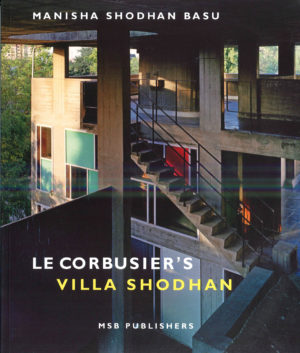| Title | Chandigarh and Le Corbusier, the Creation of a City in India 1950-65 |
Size | 295 x 210 mm |
|---|---|---|---|
| Authors | Rémi Papillault |
Pages | 322 |
| Subject | Architecture – Planning – History – Chandigarh |
Characteristics | Hardcover |
| Language | English |
ISBN | 978-84-949330-5-9 |
| Publication date | April 2023 |
Chandigarh and Le Corbusier, the Creation of a City in India 1950-65
36.00€
by Rémi Papillault
The book is about the question of time in the urban project of Chandigarh. It takes stock of the entire period of conception of the city from 1951 to the death of Pierre Jeanneret in 1965. While there have been many publications on the city, this one details the very conception of the city, linking the urbanism and the architecture to the archives of the Le Corbusier Foundation. Our ambition in make this information accessible to all, especially to the inhabitants and leaders of Chandigarh, is so that a detailed knowledge of the city’s design can be used to help preserve it.
Browse the book:
Description
this book explores the entire period of city’s conception from 1951 to the death of Pierre Jeanneret in 1965. While many have described Chandigarh’s layout plan and building designs but none have explained the actual processes employed for designing and building the city on actual ground that this book illustrates in fine detail. Our ambition in publishing this book is to make this information accessible to all, especially to the inhabitants and leaders of Chandigarh, so that a detailed knowledge of the city’s design can be used to help preserve it.
Readers reviews
Filling a longstanding and vital gap in literature, this book explains the overall plan-making process and the attendant role of important individuals and institutions in clear detail. It shows how the designing of Chandigarh entailed a long-term collective effort. There was neither a singular ‘master plan,’ fixed in space and time, nor one heroic designer in charge. Different design teams, with changing compositions and geographic locations, co-conceived the city design in an incremental, even if sometimes tumultuous, manner over fifteen or so long years.
Dr. Sanjeev Vidyarthi
Professor, University of Illinois, Chicago (USA)
What this book demonstrates is not just the astonishing complexity and depth of the Capitol projects, but the steadfast commitment to the ethical question of designing for the India of the 1950s and its vision for the future that the making of Chandigarh was. This was not easy, and not everything was perfect; nothing ever is. What Chandigarh and Le Corbusier shows is that the making of Chandigarh was not just one haughty French-man’s ‘grand’ vision enforced on the hapless and gullible Indians, but a Sisyphean labor of love, beset with constant failure, mis-steps and revisions.
Dr. Vikramāditya Prakāsh
Professor, University of Washington, Seattle (USA)
For a very long time, researchers have been studying the organisation of work in Le Corbusier’s Paris workshop. This study makes it possible to follow the materiality of Chandigarh’s making, step by step, with the gigantic enterprise on the one hand, and the artisanal means to conceive it on the other. Investigating the workshop practices and their evolution allows for an understanding of how the architect, often absent and travelling the world, managed to meet demands [of designing an entire city even when working] with a very small team. Suddenly, another dimension emerges beyond the authoritarianism and arbitrariness of certain decisions, such as the abrupt side-lining of collaborators: that of collective design work, of its meaning and of its necessity.
Yannis Tsiomis
Pro¬fessor, School of Architecture Par¬is-La Villette (France)






